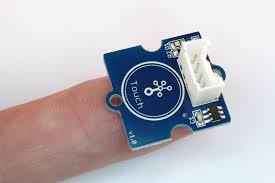The medical world has used sensors for a long time now from pacemakers to insulin pumps to help monitor various bodily signals from blood pressure to heart rate but these sensors are cumbersome, involve wires, internal sensors require surgical implantation and removal and they can get in the way of clothing and mobility. The standard hardware also carries risks of causing infection, scarring and provoking immune reactions and rejection. With ever increasing numbers of people living longer and suffering from long-term chronic conditions, the need for being able to monitor your body more effectively and in more detail in order for medicine to be most effective in treatment has also increased.

Technology has advanced enough now that scientists have created tiny sensors that can be positioned internally or externally on your body and are made of materials that can just simply dissolve away once their duty has been performed.
They would constantly monitor the functioning of your organs and tissues, transmit this information to your computer, harmlessly dissolve in the body when their job is done and detect the earliest sign of malfunction when medical intervention is easiest. Some of these devices can even make medical interventions themselves. The new electronic devices are woven into the body, do not provoke an immune reaction and are almost imperceptible to the user. “Epidermal electronics” are very thin patches that stick on the skin and can accommodate the normal bending, stretching and swelling motions of the body. These devices are biodegradable and packed with sensors that can detect almost all the vital signs, including temperature, pulse, heart electrical activity, hydration, Parkinson’s disease tremors and can detect increased stiffness in arteries, which is a predictor of heart attacks.
The dissolving electronic implant is like a more sophisticated version of dissolving sutures, but can be injected into organs and cavities and come with WiFi. The chips are made from silicon, which is inert and wont provoke an immune reaction and magnesium of which we have a RDA of 8 of these chips a day so it wont cause an overdose. A polymer coat keeps the chip from dissolving straight away but slowly wears away over a few days; the thicker the coating the longer the sensor will last.
Sensors like this will revolutionize treatment as sensors can monitor exactly what is going on inside our bodies every second of the day. It will enable scientists and doctors to understand how disease progresses and why to enable new treatments and medications as well as allowing the patient to be monitored more closely from blood pressure and oxygen levels to temperature and internal brain pressure and concentration levels of various compounds within our bodies such as medications.
With those with chronic or long-term conditions such as COPD, heart disease, transplant or cancer patients on-going monitoring can indicate to doctors at the earliest possible moment when treatment needs to be altered to reduce further damage to your body and to improve your outcome. It can also indicate the earliest moment of rejection of tissue to allow an immediate response. Being able to adjust oxygen therapy flow or medications on a daily basis depending on your health status at that moment with allow for an improved quality of life as you can be more in control of your own treatment and it will always be the most optimal level of treatment as well as being more carefully understood and monitored to allow for a better outcome or increased life expectancy.
References: http://www.irishtimes.com and http://www.extremetech.com




